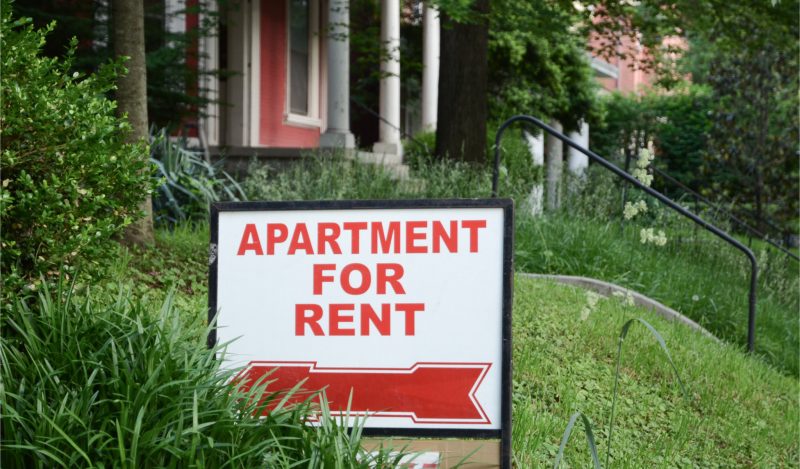So much went wrong last year that it was hard to keep up. It was like being pounded daily by waves of new edicts, most of which felt completely contrary to everything we had come to expect from a civilized country that operates according to stable rules and a presumption that people are generally free.
One of the more bizarre among many policies, one that intervened economically and targeted property rights head-on, was a moratorium on evictions. Nothing like this had ever happened to the residential rental market on a nationwide basis. The Biden administration just extended it another three months.
This all began last year. Consulting with no one — so far as we know — on September 4, 2020, the Federal Register published the following notice:
The Centers for Disease Control and Prevention (CDC)… announces the issuance of an Order under Section 361 of the Public Health Service Act to temporarily halt residential evictions to prevent the further spread of COVID-19.
In a few words, it was done. Throughout the entire country. In one sentence, and with no debate, we had a massive regulatory intervention in the lives of tens of millions, one that affects real estate values and the ability of owners to turn a profit. Let’s summarize that this is not the way the Constitution’s framers imagined that law would be made.
Landlords could no longer collect residential rent via the threat of eviction. It was like the creation of a nation of squatters by bureaucratic order. On the one hand, the order said that it does not preclude “the charging or collecting of fees, penalties, or interest as a result of the failure to pay rent or other housing payment on a timely basis.” On the other hand, if the check didn’t arrive, there was nothing that landlords could do.
The order from the CDC had teeth too. Landlords or apartment complex owners who ask non-payers to leave could be fined as much as $500,000 and even face jail time. Again, this affected every residential rental from rural Texas to New York City. It was supposed to be only for three months, expiring December 1, 2020. But of course it was extended… three times. Now was scheduled to go away at the end of July, but the Biden administration extended it while admitting sketchy constitutional grounds.
The excuse: to stop disease spread. If you have people living in homeless shelters or otherwise milling about looking for a place to live, these people could spread Covid, the CDC explained. Therefore it had jurisdiction to govern the minutia of all landlord-tenant relations in the country. The Public Health Service Act of 1944 gives the CDC such authority, the agency claimed. The Supreme Court disagreed but let the edict stand anyway, with the apparently naive Justice Brett Kavanaugh writing that it was set to expire anyway.
Back then, the CDC reasoned, stay-at-home orders meant staying home, period, even if you don’t pay your rent. Now it is merely an exercise in raw power that overrides both contracts and property rights.
And by the way, I’m sympathetic to renters here too. Many were forcibly locked out of their jobs, also in the name of disease control. It does seem unfair at some level that people would be thrown out on the streets due to coerced circumstances beyond their own control. The CDC rule was designed to fix that, but of course it creates other problems. This is how such interventions work: they create cascades of insoluble additional problems.
The CDC has never before exercised such broad power over economic life. Congress never voted on this dramatic and nationwide change. Not even the usual housing bureaucracies were involved, or the Treasury Department. The bureaucracy that did this has responsibility for disease control. But it turns out that if you interpret that broadly enough, you can regulate nearly the whole of life.
Congress was not entirely disregarding of the immense problems this created for landlords around the country, who worried about their ability to pay the bills themselves. Residential rentals often operate on thin margins, and this was especially a problem once people started fleeing the cities for the suburbs and blue states for red states. They needed cash flow, and that meant subsidizing rents.
Last year and this, Congress came to the rescue, spending your money to fix the problem CDC created. Congress authorized $46 billion into rental aid, available for anyone and everyone who filled out some big form, swore not to be lying ,and had income less than six figures. Getting that aid was arduous and so it is hardly surprising that not many people took up the offer. Most renters did not even know it was available.
So between December and the end of May 2021, only $1.5 billion of that total ended up being distributed for rent and utilities. The rest, it appears, went unused. Which is hardly surprising. It’s not a normal thing for most people to believe that they can pull up a government website, fill out a form, and get a check – as much as D.C. mavens believe that this is how economics should work. In addition, the payments were (of course) uniformly delayed.
The latest guess on the numbers that could face eviction is 1.2 million households. This is because they will not just be responsible for current rents but for back rents too – a fact that very well might shock people who believed that the CDC had the power to make all their financial obligations disappear. At that point, there could be a scramble to grab the rest of the billions that Congress had previously tried to dish out.
The ever-confident Biden administration thinks that it can fix the problem. “The White House also convened a meeting of dozens of cities last week to share plans for staving off an eviction crisis,” reported the Washington Post. “Emphasis was put on diversion programs that can stop evictions early, keep cases out of court and allow more time for rental assistance to move through the system.”
As much as the White House does not want to admit it, this country is too big, its problems too multifarious and complex, and the particulars of each case are far too diffuse to be managed via Zoom meetings with housing regulators around the country. The eviction crisis will hit at some point, and there is no one in Washington in a position to do anything about it, short of effectively abolishing residential rental properties.
Let us return to the CDC’s initial thinking on this eviction moratorium. It was all about stopping disease, with the thinking that shelter-in-place orders would reduce death. This is an empirical proposition. Testable. And by the way, even if such policies did actually achieve the results, they should still be opposed and stopped on grounds that such an executive edict from a bureaucracy overrides individual decision making and property rights.
But here’s the kicker: they didn’t actually work. A new study (one of as many as 50 or so that I’ve seen) from the National Bureau of Economic Research and the Rand Corp. took a close look at all US states and 43 countries. The authors were seeking a correlation of some sort between shelter-in-place (SIP) orders and lives saved. They found the opposite:
We find that following the implementation of SIP policies, excess mortality increases. The increase in excess mortality is statistically significant in the immediate weeks following SIP implementation for the international comparison only and occurs despite the fact that there was a decline in the number of excess deaths prior to the implementation of the policy. At the U.S. state-level, excess mortality increases in the immediate weeks following SIP introduction and then trends below zero following 20 weeks of SIP implementation. We failed to find that countries or U.S. states that implemented SIP policies earlier, and in which SIP policies had longer to operate, had lower excess deaths than countries/U.S. states that were slower to implement SIP policies. We also failed to observe differences in excess death trends before and after the implementation of SIP policies based on pre-SIP COVID-19 death rates.
If we care about science, such findings should make a huge difference in the evaluation of the effectiveness of these actions. Will they? You know the answer. No one in Washington seems to care. Just the opposite. They look right past such studies, willfully ignore them, and barrel ahead with their brainless and despotic actions.
The problems in the housing industry are just getting going. It’s not just the impending eviction crisis, which will surely be “solved” with billions more in emergency spending bills. A new housing boom has been kicked off by a dramatic lockdown-related demographic shift from lockdown states to open states. Maybe that much makes sense.
We’ve entered into an area of post-truth governance. If they can take away your right to enforce rent collection from your own tenants — and this has been provisionally codified by the Supreme Court — while attempting to replace normal commercial contracts with billions in welfare spending, nothing is off the table.
Public health has long been held to be an exception to the normal presumptions of rights and liberties. This tendency has sometimes proven highly dangerous in the past (consider the eugenics movement). Our times have shown us as never before how a ruling class can cite a seemingly reasonable rationale for overriding liberties and the rule of law and use that exception to upend life and civilization as we’ve known them.
Join the conversation:


Published under a Creative Commons Attribution 4.0 International License
For reprints, please set the canonical link back to the original Brownstone Institute Article and Author.









